– Neil D’Silva
There are two things that are absolutely true with Hindi horror movies today:
- Everyone who is a creative producer (read: film/TV/digital show producers, channels, book publishers) wants to do something in horror.
- But the horror that they put out rarely works.
Think about it. When was the last time that an Indian horror film or a show really had you scared? Really raised your hair in the theater and then kept playing out in your mind long after you had done watching it?
I’ll be really surprised if you have a ready answer for this one.
And the answer to why Hindi horror films are not working is not all that difficult, really.
Let’s go back a couple of decades. Eighties would be good. That was the time when Indian horror was at its prime (and probably the only decade it was). That was also the time when I was growing up as a child fascinated with the genre.
In those beautiful eighties, there was only one name in Indian horror, and no prizes for guessing it; I am talking of the Ramsays. Well, a lot of people might roll their eyes at the Ramsay brand of horror today, but back in those days, these low-budget horror movies were giving even top stars such as Amitabh Bachchan and Mithun Chakraborty tough competition. People were thronging the theaters for the Ramsay movies such as Dak Bangla, Tahkhana, Purana Mandir, Purani Haveli, Veerana, Bandh Darwaza, and many others. People were talking about them for days on end. Even today, horror fans worldwide are digging up the movies of the Ramsays, and are crinkling up their noses at the contemporary Vikram Bhatt brand of horror.
So, what was in the Ramsay’s horror movies that is missing in today’s horror movies? In one word — atmosphere.
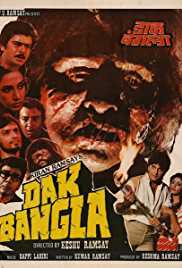
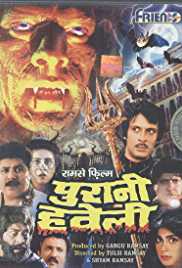
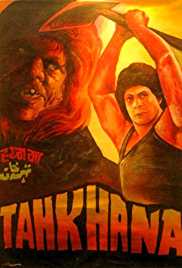
Every Ramsay movie had this absolutely chilling atmosphere running throughout. Each movie had a different atmosphere, whether it was a mandir or a haveli or a cave or sometimes an entire village. And this atmosphere was not an afterthought; it was written into the scripts in such a strong manner that it become an identity of the film. Well, in some cases, the names of the movies were based on the location where there were taking place.
Long before the monsters appeared in these films, it was the atmosphere that freaked us out. A door opening, a window pane creaking, a curtain rustling… all of these things sent a chill down our collective spines. The poor monster would usually have only ten minutes of play-time, if he was lucky that is, but that was not where the real fear was.
In fact, in the Ramsay movies, the atmosphere was so profoundly built up that even when there were those filler comedy or sex scenes (which was a hallmark of their movies), there was a sense of dread.
The Ramsays were smart. They knew that once the monster came in, the shock, awe, despair, fear, all of that, were over. They knew that the entry of the monster meant that the movie now became an action movie of sorts.
That was one rule of horror that the Ramsays mastered with their Hindi horror movies — the foreplay is much more important than the actual bang-bang.
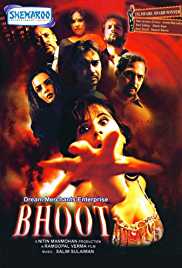
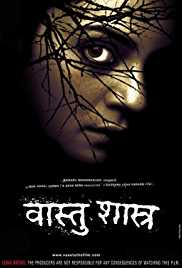
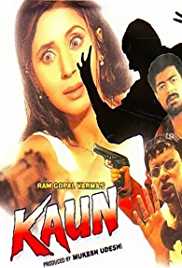 If you think I am giving the Ramsay movies too much weight here, think of the other horror director of India that met with success in the genre. Ram Gopal Verma in his early days. His horror movies, Raat, Vaastu Shastra, Phoonk, and Naina played on the psychology in a major way. In fact, even the insipid Bhoot was such a major success because for the first time an urban home was the setting of a mainstream horror film. And, I need to remind you of Kaun, of course. Though not technically horror, it is one of the scariest movies ever. That last pay-off, Urmila Matondkar’s dance of death on the terrace wall is something I will carry to my grave.
If you think I am giving the Ramsay movies too much weight here, think of the other horror director of India that met with success in the genre. Ram Gopal Verma in his early days. His horror movies, Raat, Vaastu Shastra, Phoonk, and Naina played on the psychology in a major way. In fact, even the insipid Bhoot was such a major success because for the first time an urban home was the setting of a mainstream horror film. And, I need to remind you of Kaun, of course. Though not technically horror, it is one of the scariest movies ever. That last pay-off, Urmila Matondkar’s dance of death on the terrace wall is something I will carry to my grave.
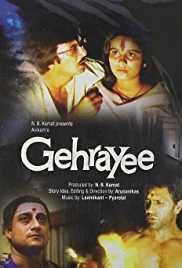 Heard about this little nugget of an Indian horror film — Gehrayee? India’s answer to The Exorcist, and what an answer! It is a possession film at its core, but the movie spends a significant amount of time in the evolution of the girl and how it impacts the people around her. The actual frights come in much later in the movie. And again, what a pay-off!
Heard about this little nugget of an Indian horror film — Gehrayee? India’s answer to The Exorcist, and what an answer! It is a possession film at its core, but the movie spends a significant amount of time in the evolution of the girl and how it impacts the people around her. The actual frights come in much later in the movie. And again, what a pay-off!
In the 80s and 90s, even the TV horror shows knew how to do this right. I can name at least two TV horror shows that can send a chill down your spines even today. Stone Boy and Aghori (the one starring Rajesh Vivek as Baba Shandilyanath). Terrifying shows, both. And people of the 80s and 90s who watched them still remember them. Again, what was the common factor in them? You guessed it — they were brain-numbing atmospheric delights with a slow-burn build-up that would never go away.
This is so true in all the classic horror movies of Hollywood as well. One of the movies that well and truly scared me out of my skin was The Silence of the Lambs. What a movie! Now that’s a movie I will think twice before watching even today, even though I know it frame by frame. But those who know this Oscar-winning movie will identify with this — where were the jump-scares? And similarly, where were the jump-scares in any of the other horror greats, such as Psycho, Rosemary’s Baby, The Shining, Children of the Corn… The list can go on.
That’s what is missing in Hindi horror movies and shows today. Everyone is too busy stuffing jump-scares at every opportunity. Stories are written around jump-scares; that’s how sad it is. People want to fill in a jump-scare right in the first scene when you don’t even know the characters, much less care about them. That is a definite wasted jump-scare, and it spoils your experience because now you know the extent to which the movie can scare you.
Instead, how about creating (and investing) in a slow-burn horror that doesn’t just horrify but also terrify? How about creating an experience that is well and truly hair-raising? Horror doesn’t need monsters and lonely girls walking long corridors in search of them. It needs an atmosphere that we would not want to get into.
(All image sources: IMDB)
 The writer Neil D’Silva is an author and screenwriter. He has six books to his credit and he writes for TV shows, digital shows, and films. He works primarily in the horror genre.
The writer Neil D’Silva is an author and screenwriter. He has six books to his credit and he writes for TV shows, digital shows, and films. He works primarily in the horror genre.
Here is his Amazon page.